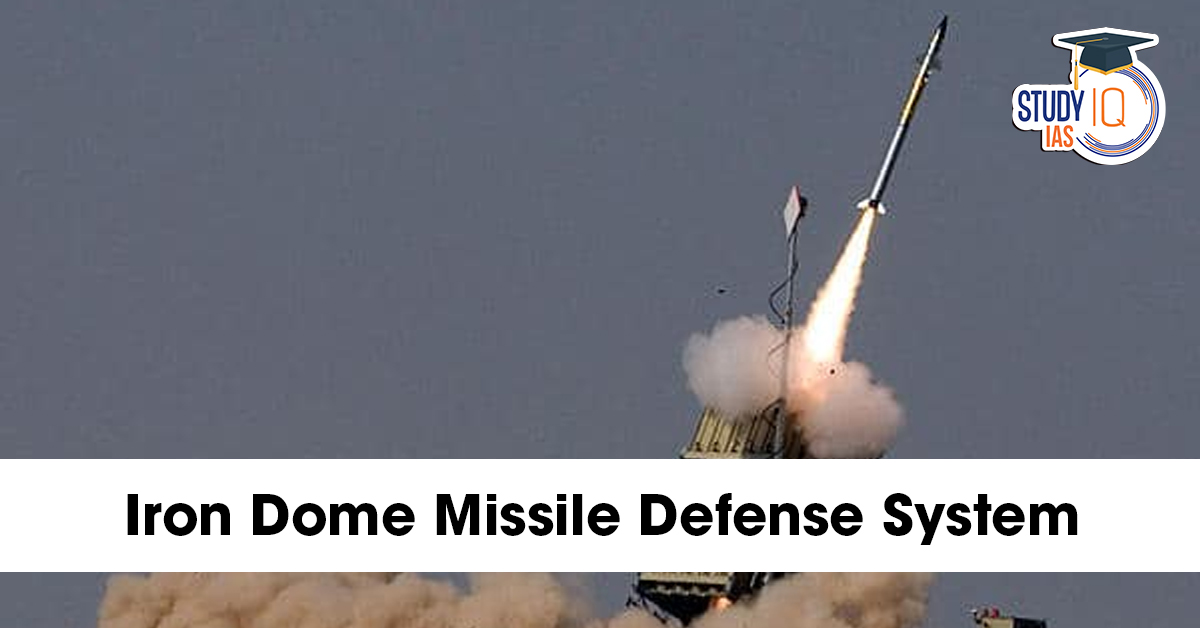Table of Contents
The Iron Dome Missile Defense System is one of the most advanced and widely recognized short-range air defense systems in the world. Developed by Israel, with substantial support from the United States, it is designed to intercept and destroy incoming short-range rockets, artillery shells, and mortars before they can hit populated areas. Since its deployment, the Iron Dome has successfully intercepted thousands of rockets, saving countless lives and critical infrastructure.
As the Middle East tensions escalate in 2025, the Iron Dome remains central to Israel’s national security strategy. Here’s everything you need to know about this cutting-edge defense technology.
What is the Iron Dome?
The Iron Dome is a mobile, all-weather air defense system developed by Rafael Advanced Defense Systems in collaboration with Israel Aerospace Industries (IAI). It is designed to intercept:
-
Short-range rockets
-
Mortar shells
-
Artillery rounds
-
Some types of drones (UAVs)
The system determines if the incoming projectile poses a threat to a populated area or vital installation. If so, it launches a Tamir interceptor missile to destroy it mid-air.
How Does Iron Dome Work?
The Iron Dome operates through three main components:
1. Detection and Tracking Radar (EL/M-2084)
-
Developed by Elta Systems, this radar detects and tracks incoming projectiles in real-time.
-
It calculates the trajectory, speed, and expected impact point.
2. Battle Management and Weapon Control (BMC)
-
Developed by MPrest Systems, the BMC processes data from the radar and decides whether interception is necessary.
-
If the incoming projectile is heading toward an open area, no interception is made — saving costs and resources.
3. Missile Firing Unit (Tamir Interceptors)
-
The system launches Tamir missiles, each equipped with electro-optic sensors and steering fins.
-
These interceptors track and destroy incoming threats in the air, minimizing ground impact.
Iron Dome Success Rate
Since its deployment in 2011, the Iron Dome has maintained a success rate of over 90% in intercepting incoming threats aimed at populated areas.
-
2021 Gaza Conflict: 90–95% interception rate for over 4,000 rockets.
-
October 7, 2023 Onwards: The system has been under constant stress due to simultaneous attacks from Gaza, Lebanon, Syria, and Iran.
-
June 14, 2025 Attack: Despite an overwhelming missile barrage from Iran, the Iron Dome played a crucial role in defending Tel Aviv and other cities, intercepting the majority of short-range threats.
Cost of Operation
One of the major criticisms of the Iron Dome is its high cost per interception:
-
Each Tamir missile costs approximately $50,000
-
Incoming rockets (from Gaza, for example) can cost as little as $500
-
Over time, this creates a strategic and financial imbalance
This is why Israel is developing cheaper alternatives like the Iron Beam (laser-based interception).
Mobility and Deployment
-
Each Iron Dome battery can protect an area of 150 square kilometers
-
Highly mobile – batteries can be relocated within hours
-
A full Iron Dome battery includes:
-
1 radar system
-
1 control unit
-
3–4 launchers (each with 20 Tamir missiles)
-
Israel is estimated to operate over 10 full batteries across strategic areas.
Global Interest & Export
Due to its exceptional performance, the Iron Dome has attracted international buyers:
-
United States: Purchased two batteries for testing and homeland defense
-
Azerbaijan: Reported to use the system during regional conflicts
-
Romania & India: Expressed interest in collaboration and purchase
-
Ukraine (2023–2024): Requested Iron Dome support amid Russian attacks, but Israel hesitated due to geopolitical balance
Iron Dome vs. New Threats in 2025
While Iron Dome has proven highly effective, newer threats are emerging:
-
Swarm drone attacks that can overwhelm radar systems
-
Hypersonic missiles (still beyond Iron Dome’s capacity)
-
Coordinated multi-front attacks (e.g., simultaneous strikes from Iran, Gaza, and Lebanon)
To address these, Israel is increasingly integrating AI algorithms, cybersecurity layers, and multi-system coordination with Arrow and David’s Sling.
Iron Dome vs Iron Beam: The Future
The Iron Beam, Israel’s laser-based missile defense system, is being developed as a cheaper and faster alternative to the Iron Dome. While still undergoing field trials in 2025:
-
Iron Beam interception cost: Just a few dollars
-
Advantages: Infinite ammunition, no intercept missile storage needed, near-instant response
-
Limitations: Weather-sensitive (rain, dust, fog can affect laser)
Together, Iron Beam and Iron Dome are expected to form Israel’s hybrid air defense strategy by 2026.
Key Facts About the Iron Dome
| Feature | Details |
|---|---|
| Developer | Rafael Advanced Defense Systems |
| Operational Since | 2011 |
| Range | 4 to 70 km |
| Interceptor Missile | Tamir |
| Success Rate | 90%+ |
| Cost Per Interception | ~$50,000 |
| Countries Using/Interested | USA, Azerbaijan, India, Romania |
Latest News: Iron Dome in 2025
-
June 2025: Iron Dome intercepts hundreds of missiles during Iran’s ‘Operation True Promise 3’
-
Ongoing: Collaboration with the U.S. continues for system upgrades and exports
-
Future Roadmap: Full integration with Iron Beam and AI-driven threat prediction models
Conclusion
The Iron Dome Missile Defense System remains a cornerstone of Israel’s national security, with its ability to intercept short-range threats in real-time. As conflicts evolve and missile technologies grow more sophisticated, Israel is proactively upgrading and expanding its defenses to meet the challenge. With new technologies like the Iron Beam on the horizon, the Iron Dome will soon be part of a more cost-effective and multilayered defense architecture.


 World Summit on Disaster Management (WSD...
World Summit on Disaster Management (WSD...
 Domestic Systemically Important Banks (D...
Domestic Systemically Important Banks (D...
 The Missing Link in India’s Critical M...
The Missing Link in India’s Critical M...

























